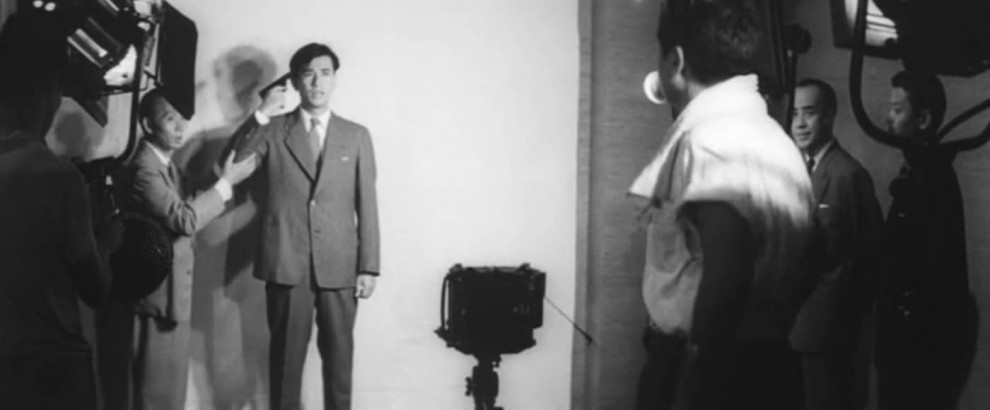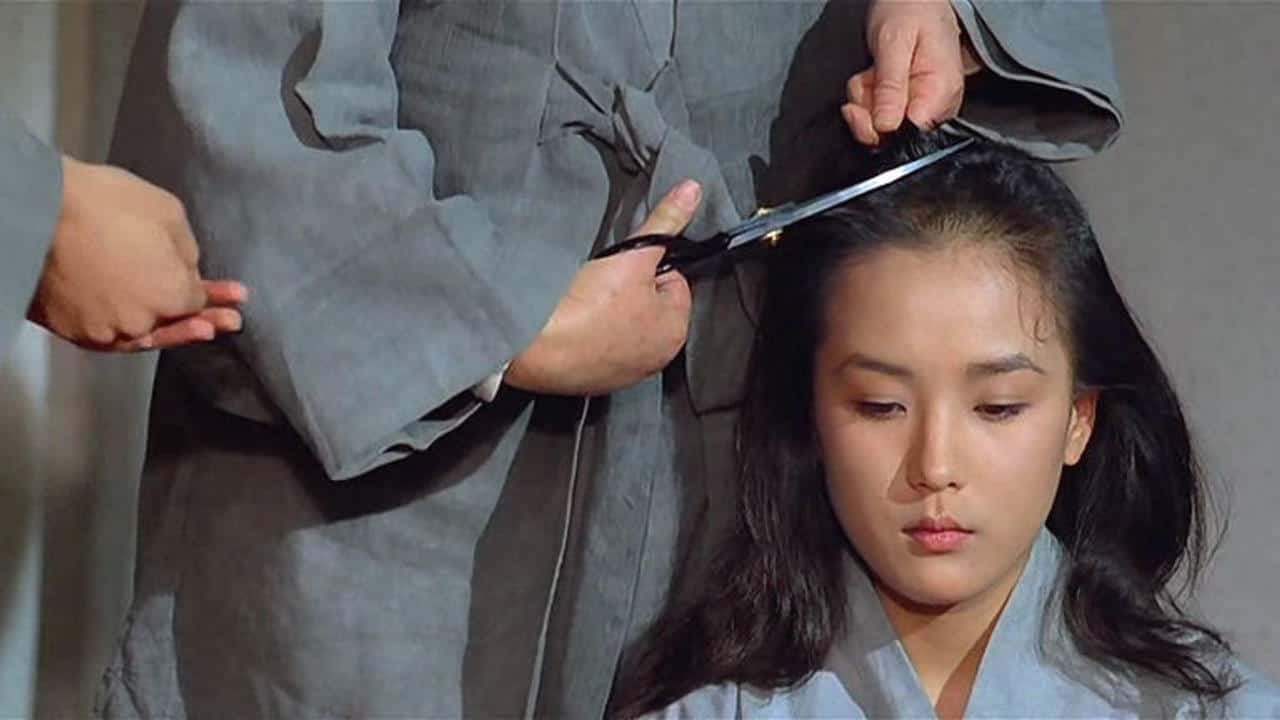When an insurance company makes the announcement that the business is folding and they are letting the staff go, employee Takashi Kiguchi pleads for the future of his co-workers by putting a gun to his head and threatening suicide. However, before he can pull the trigger a work friend reaches for the gun, causing Takashi to only injure himself. The act of defiance does not go unnoticed though, and the press soon flock to meet the man who offered up his life for his fellow workers. When an insurance company hears about this story, they decide that he would be the ideal representative of their new ad campaign. Somewhat hesitant at first, Takashi soon becomes obsessed with the stardom that his new role is offering. Trying to use his voice for positive platform, he becomes obsessed with ensuring that everyone respects him and his actions.
Blood is Dry is screening at The Japan Foundation:

A young photographer, who has a relationship with Takashi's agent, finds the man's success to be morally reprehensible. The photographer begins to try to unravel any dirt he can from the star's personal life, as well as thrusting himself into the celebrity's personal affairs. Although Takashi appears to have a clean past and strong character, the pressures of the spotlight start to wear down his calm demeanor, which allows the photographer to slowly break him down. This pushes the star to extreme measures as he tries to salvage his image from the declining public opinion.

The most prominent strength of “Blood is Dry” and the most noteworthy for further discussion, lies within the film's script. The concept of an ad agency selling suicide as a way to promote a product creates a social narrative that transcends the time period in which the film took place. To say that Director Yoshishige Yoshida had this in mind when making the film would be wishful thinking of seeing it as somewhat prophetic. I think the success of the themes that are still relative today rests more on creating a sincere character, whose subsequent downfall reflects a familiar humanity. Although it is apparent that the film fits well within the time period and climate of the production time, the narrative shows that with “Blood is Dry”, Yoshida was able to tap into a concept that is relevant to different generations and cultures.
The film's visuals are a bit harder to review as it seems to exist more as a service to the plot, and only a few moments of visual flair that seem more at the forefront of some films within the Japanese New Wave Movement. There seems to be an emphasis on location work that creates most of the flair. There is one shot that takes place in a littered field where the camera pans out to capture a chase. The mix of the ugly landscape with the wider pan creates an almost ethereal visual moment that feels lost within the close up shots that make up the bulk of the film. It leaves the feeling that there is some lost potential within the overall visual representation.
There is some flair within the ending sequence which is bound to stay ingrained in the mind of some viewers. However, it is hard not to think that the sensational narrative of the ending has more to play on the strength of the sequence over the cinematography. The moments where the visuals seem to exceed are too short lived to praise the overall presentation. However, with the focus more so on the message and the story, the lack of strong visuals is not a deterrent.
Although the film focuses on several different characters, and their relation to the ad campaign and/or Takashi's personal life, the success of the film really lies on Keiji Sada to portray a “man of the people” going through an identity crisis. Sada handles the role exceptionally well, which grounds the sensational concept of an ad agency exploiting suicide for profit. Sada is able to maintain a certain humility and honesty to the role that stays persistent even through the protagonists downfall. The success of the production feels like it largely rested on Sada to play a consistent role to make a character who seems true to his own values throughout his struggles. “Blood is Dry” could stand as a notable entry in the Japanese New Wave on Keiji Sada's performance alone.

As a fan of modern film, my interest in the Japanese New Wave has been more of a passive endeavor, with the combination of cultural divide being increased by dealing with a time period I am unfamiliar with. Although an understanding of the political climate and economic problems at the time might result in a better understanding of “Blood is Dry”, I feel as though the main themes in the film are just as relevant today. The production represents an obsession with martyrdom and how feeding the public opinion can warp a person and mess with their own self perception. This is apparent within the internet age where online users will see people rise to stardom off of the back of a message or concept which either gets out of control or is just mismanaged. With the film's protagonist, we see this exemplified in such a tragic, yet predictable fashion which makes for an engrossing experience. On top of the strong narrative, Keiji Sada gives one of the best performances I have seen in a film from the era. With a message that will resonate with viewers today backed by a great performance I would consider the production a must see film within the Japanese New Wave Movement.















